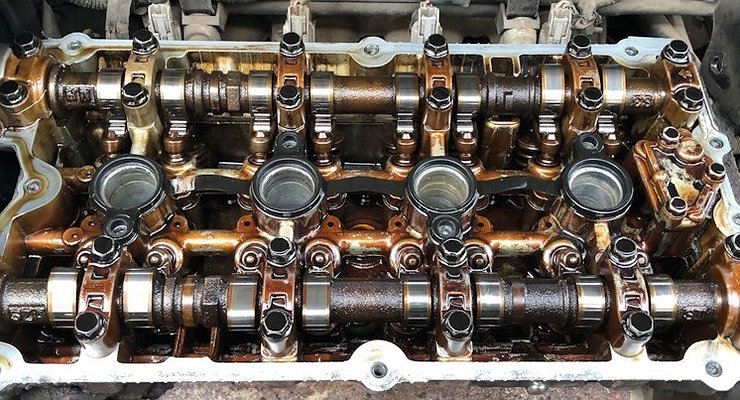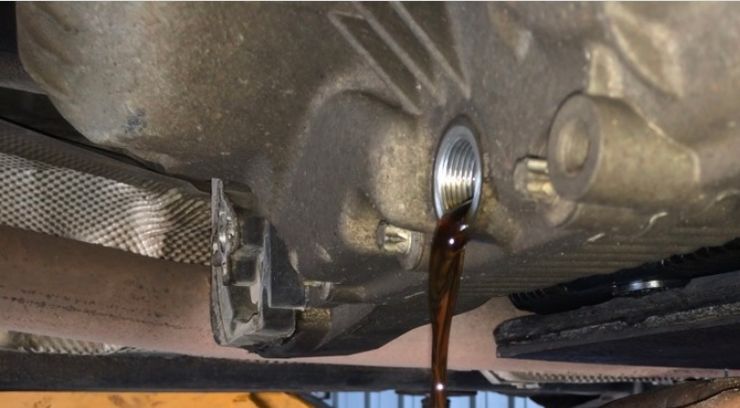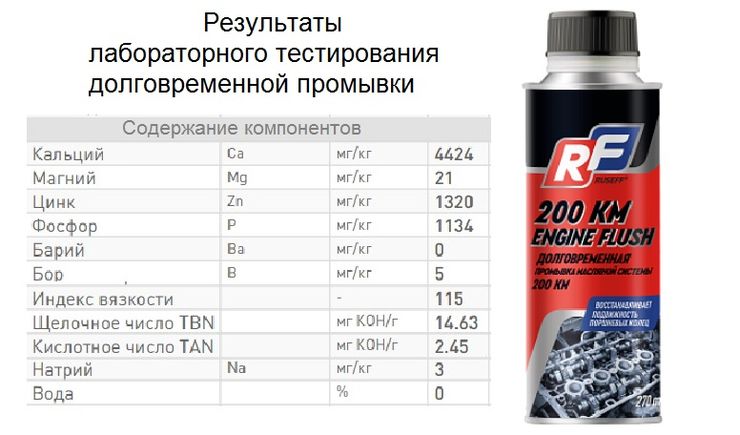A properly organized engine oil change, as a rule, includes preliminary cleaning of the engine lubrication system, carried out using automotive chemicals. The specifics of the action of such products were studied by the AvtoVzglyad portal.
Today on our market there are many different coil compositions. Among them are many fast-acting drugs, the so-called express rinses, as well as drugs of limited specialization. The latter provide cleaning of lubrication systems that differ in the degree of contamination and wear of parts.
In addition, compositions intended for long-term washing treatment of engines have recently gone on sale. These types of products are mainly used for gently flushing the system during routine lubricant changes. At the same time, they are also effective in performing enhanced cleaning procedures aimed at removing old deposits from the lubrication system.
However, experts say that these properties alone are not enough for high-quality cleaning of the power unit. Flushing must not only be effective, but also safe for engine components. Recall that for the complete removal of deposits, the drug must contain detergent-dispersant components of the type that are present in modern motor oils.
To better understand the specifics of the operation of products of this category, AvtoVzglyad test editors conducted a study of a new long-acting flush in one of the capital’s centers of expertise – the composition of “Engine Flush 200 km” brand Ruseff. During the test, its alkaline indicators (TBN) were evaluated, as well as the presence of alkaline earth metals: in particular, calcium. The more it is, the better the washing properties of washing are manifested.
In turn, the safety of this engine flush was controlled by the amount of zinc and phosphorus. The bottom line is that the basis of the detergent composition is a solvent. During the cleaning process, it can dilute the oil film on the parts of the lubrication system and lead to abrasion of metal. The latter is especially critical for modern high-performance engines.
To prevent this, manufacturers add anti-seize additives to the flushes, similar to those found in motor oils. The presence of such components is just indicated by the increased content of zinc and phosphorus. And the more of them in a given flush, the safer it is for the engine. In addition, the value of the acid number (TAN) is also important for the safety assessment. The lower it is, the lower the risk of corrosion in the system.
The results of Ruseff’s lengthy coil studies are shown in the photo above. Comparison of the measured parameters of this preparation with comparable indicators of fresh synthetic oil class 10W40 indicates that the tested sample has excellent cleaning properties.
A clear proof of this are the high values of TBN and calcium content, which are significantly higher than those of the reference “plastic”. Good results from washing studies were also recorded in the field of safety indicators. In particular, the content of zinc and phosphorus in the sample studied exceeds the standard by about 20%.
As a result, the experts positioned Ruseff’s drug as optimally balanced in terms of its operational parameters. According to the manufacturer’s recommendations, it is poured into the lubrication system about 200 km before the scheduled engine oil change date. This also improves the safety and efficiency of cleaning, since such a liquid gently washes the “inside” of the engine. It carefully removes, layer by layer, deposits, varnishes and sludge from its nodes. All this dirt is held in suspension in the engine oil itself, which allows it to be completely removed from the system when the waste is drained.
Today on our market there are many different coil compositions. Among them are many fast-acting drugs, the so-called express rinses, as well as drugs of limited specialization. The latter provide cleaning of lubrication systems that differ in the degree of contamination and wear of parts.
In addition, compositions intended for long-term washing treatment of engines have recently gone on sale. These types of products are mainly used for gently flushing the system during routine lubricant changes. At the same time, they are also effective in performing enhanced cleaning procedures aimed at removing old deposits from the lubrication system.
However, experts say that these properties alone are not enough for high-quality cleaning of the power unit. Flushing must not only be effective, but also safe for engine components. Recall that for the complete removal of deposits, the drug must contain detergent-dispersant components of the type that are present in modern motor oils.
To better understand the specifics of the operation of products of this category, AvtoVzglyad test editors conducted a study of a new long-acting flush in one of the capital’s centers of expertise – the composition of “Engine Flush 200 km” brand Ruseff. During the test, its alkaline indicators (TBN) were evaluated, as well as the presence of alkaline earth metals: in particular, calcium. The more it is, the better the washing properties of washing are manifested.
In turn, the safety of this engine flush was controlled by the amount of zinc and phosphorus. The bottom line is that the basis of the detergent composition is a solvent. During the cleaning process, it can dilute the oil film on the parts of the lubrication system and lead to abrasion of metal. The latter is especially critical for modern high-performance engines.
To prevent this, manufacturers add anti-seize additives to the flushes, similar to those found in motor oils. The presence of such components is just indicated by the increased content of zinc and phosphorus. And the more of them in a given flush, the safer it is for the engine. In addition, the value of the acid number (TAN) is also important for the safety assessment. The lower it is, the lower the risk of corrosion in the system.
The results of Ruseff’s lengthy coil studies are shown in the photo above. Comparison of the measured parameters of this preparation with comparable indicators of fresh synthetic oil class 10W40 indicates that the tested sample has excellent cleaning properties.
A clear proof of this are the high values of TBN and calcium content, which are significantly higher than those of the reference “plastic”. Good results from washing studies were also recorded in the field of safety indicators. In particular, the content of zinc and phosphorus in the sample studied exceeds the standard by about 20%.
As a result, the experts positioned Ruseff’s drug as optimally balanced in terms of its operational parameters. According to the manufacturer’s recommendations, it is poured into the lubrication system about 200 km before the scheduled engine oil change date. This also improves the safety and efficiency of cleaning, since such a liquid gently washes the “inside” of the engine. It carefully removes, layer by layer, deposits, varnishes and sludge from its nodes. All this dirt is held in suspension in the engine oil itself, which allows it to be completely removed from the system when the waste is drained.
Source: Avto Vzglyad
Donald Salinas is an experienced automobile journalist and writer for Div Bracket. He brings his readers the latest news and developments from the world of automobiles, offering a unique and knowledgeable perspective on the latest trends and innovations in the automotive industry.















